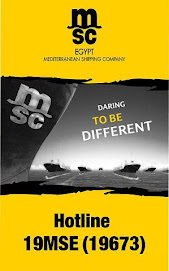By Laila Afifi*
Special to The 83rd
First day of my freshman year, I walked into the English class, bewildered and anxious. The seats were set in a U form, different from my middle school familiarity. I sat down and noticed a peculiar box sitting in the middle of the room. After everyone was seated the teacher lifted the box and revealed a pumpkin. He asked us to describe it. I was not sure if he was testing our descriptive skills or just measuring our writing but we all sat down and started describing. The pumpkin was orange, it formed a vase shape: fat at the bottom thin at the top, and it had a pink paper pinned roughly in the middle. Then the teacher asked two students to walk around the pumpkin. The second student then lifted the pumpkin top and looked inside it, chuckled and set the top back on.
After the time was up the teacher asked one of the students who walked around to describe what he saw. “There is a pink piece of paper pinned up on one side, a red balloon pinned up on the other side, and an X mark on the third side.” We all gasped because while concentrating on what we saw, we forgot that the people opposite us saw something else. The teacher then asked the second person who saw the inside of the pumpkin to tell us what he saw, and he said, “A red heart.”
At that moment I realized I was guilty of looking at things in only one perspective. I began looking at my life and realized that there were times when I only saw one side of the story rather than look for all perspectives. When my friends tell me a story, I only hear their side of the story. I never considered another side.
This point is emphasized daily. In Nagiub Mahfouz’s novel, Miramar, this idea is shown explicitly. The book contains seven chapters. Each chapter gives the same story. All the events take place at the same time, with the same people. However, each chapter is told from the point of view of a different character in the book. The only way to understand the entire story and the motives behind each character is to read the seven chapters. This book is stimulating in the sense that it makes you think and analyze your life.
As humans we owe each other the truth, and this can only be achieved by seeing the entire story, in full 360 degrees. I realized that we only see one side of everything, and as humans, we judge. We judge solely on what we see, which is only part of the story. This is a problem because its human nature. To understand the full idea or whole concept we must look at all angles.
I believed that I was a fair and unprejudiced person; however, this exercise showed me that we all need to work on our perception skills. Now, I believe that school is the ideal breeding ground for open mindedness and that all classes should integrate such ideals into their day-to-day learning because not only is limitation of perspective a problem in our school but also in our community, nation, and world.
*Laila Afifi is responding to the topic of the Near East and South Asia (NESA) Call for Papers for the 2007-2008 academic year. Teachers were asked to reflect on the essential things they believe in in their learning/teaching career.
Tuesday, November 20, 2007
This I Believe
Posted by
ISSUE NO. 4 MARCH 2008
at
10:39 PM
![]()
Labels: Opinion/Editorial
Subscribe to:
Post Comments (Atom)



No comments:
Post a Comment